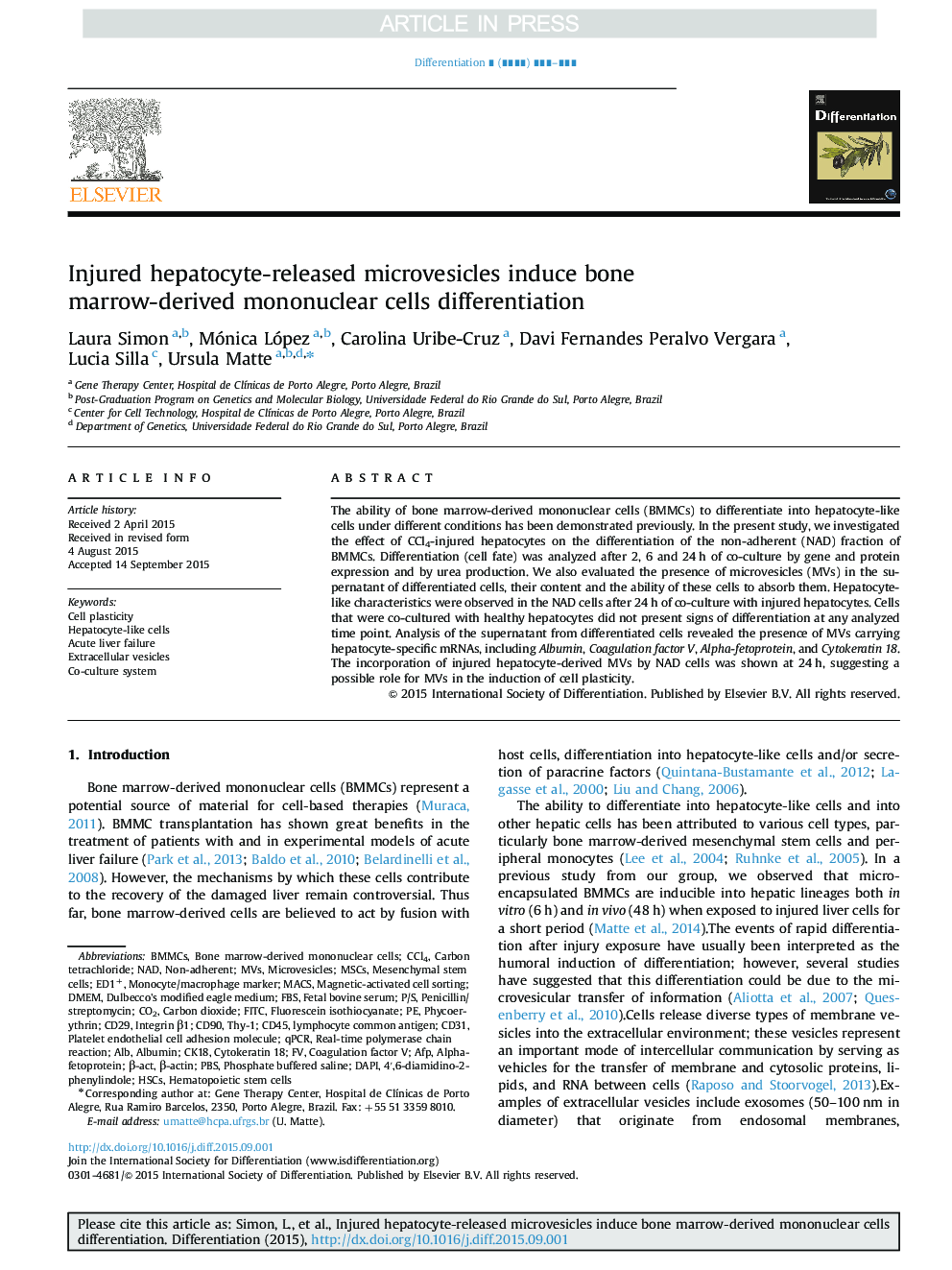| Article ID | Journal | Published Year | Pages | File Type |
|---|---|---|---|---|
| 8436322 | Differentiation | 2015 | 8 Pages |
Abstract
The ability of bone marrow-derived mononuclear cells (BMMCs) to differentiate into hepatocyte-like cells under different conditions has been demonstrated previously. In the present study, we investigated the effect of CCl4-injured hepatocytes on the differentiation of the non-adherent (NAD) fraction of BMMCs. Differentiation (cell fate) was analyzed after 2, 6 and 24Â h of co-culture by gene and protein expression and by urea production. We also evaluated the presence of microvesicles (MVs) in the supernatant of differentiated cells, their content and the ability of these cells to absorb them. Hepatocyte-like characteristics were observed in the NAD cells after 24Â h of co-culture with injured hepatocytes. Cells that were co-cultured with healthy hepatocytes did not present signs of differentiation at any analyzed time point. Analysis of the supernatant from differentiated cells revealed the presence of MVs carrying hepatocyte-specific mRNAs, including Albumin, Coagulation factor V, Alpha-fetoprotein, and Cytokeratin 18. The incorporation of injured hepatocyte-derived MVs by NAD cells was shown at 24Â h, suggesting a possible role for MVs in the induction of cell plasticity.
Keywords
coagulation factor VBMMCsDAPICD45MACSCCl4ALBMicrovesiclesMSCsHSCsCD31FITCCK18qPCRFBSDMEMMVSPBSCD29CD904′,6-diamidino-2-phenylindoleDulbecco's modified Eagle MediumP/Sβ-actinAlbuminalpha-fetoproteinIntegrin β1Cell plasticityAFPThy-1Extracellular vesiclesCarbon dioxidefetal bovine serumhematopoietic stem cellsMesenchymal stem cellsbone marrow-derived mononuclear cellshepatocyte-like cellscytokeratin 18Co-culture systemNon-adherentphycoerythrinPhosphate buffered salinefluorescein isothiocyanatemagnetic-activated cell sortingplatelet endothelial cell adhesion moleculeNADAcute liver failurereal-time polymerase chain reactionPenicillin/streptomycinCarbon tetrachlorideCO2
Related Topics
Life Sciences
Biochemistry, Genetics and Molecular Biology
Cancer Research
Authors
Laura Simon, Mónica López, Carolina Uribe-Cruz, Davi Fernandes Peralvo Vergara, Lucia Silla, Ursula Matte,
